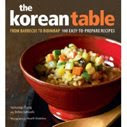Sushi rice is short-grain white rice that is cooked and mixed with rice vinegar and sugar. This, of course, is the rice you're biting into when you sit down to a plateful of sushi. What you put on or in the rice determines the kind of sushi.
But there are other dishes -- which don't require the skills of a trained chef -- to make at home with these delicate-tasting grains. One is something the Japanese call chirashi-zushi, which is perfect for a picnic.
Begin with the cool rice mixed with a little vinegar and sugar, and add crisp and highly aromatic vegetables and fish. Sweetly seasoned shiitake mushrooms along with briny shrimp, for instance, will offer both earthy and sea tastes. Toss the rice "salad" with pea pods, green peas, and cucumbers, and you have the important elements of the Japanese table: color, texture, and flavor.
Cookbook author and teacher Keiko Hayashi says that chirashi-zushi can be made in any style. On a recent visit to Boston, she said that regional differences come into play in this dish. For Tokyo-style, the rice becomes Edomae chirashi-zushi (Edo is the old name for Tokyo) and has lots of raw fish arranged on top of the rice. Osaka-style contains more vegetables, with cooked fish -- salmon or shrimp -- mixed into the rice and scattered on the top.
Another popular picnic food is omusubi, or rice balls. These are ubiquitous fare on school outings. In her version, Hayashi explained, she likes to highlight a single ingredient on top of the sushi rice, which she molds and wraps in a one step. Use smoked salmon, for instance, or try spicy radish sprouts and a slice of ripe avocado.
The chirashi-zushi and the rice balls begin with a long list of ingredients. Most, however, are not cooked, and all can be prepared in advance.
Making the rice is the most important part of the dish. While it's still hot, season it with the rice vinegar mixture because the hot rice will absorb liquid seasonings. The Japanese use a shallow wooden bowl made of cedar, but a wooden salad bowl -- even a glass bowl -- will do.
You'll want chopsticks in your picnic basket and chilled green tea or Japanese beer. And probably someplace quiet. The delicate food goes well with a tranquil setting.
Sushi rice
Serves 4
June 9, 2004
If you have a rice cooker, prepare according to the cooker's directions. Otherwise, use a heavy-bottomed pot.
3 cups short-grain white Japanese rice
7¾ cups water
5 tablespoons rice wine vinegar
3 tablespoons sugar
1 teaspoon salt
Extra rice wine vinegar (for the bowl)
1. Place rice in a heavy-bottomed pot. With water running, rinse the rice by stirring with your hand. Drain the water as it becomes cloudy. Repeat this process about 5 times until the water runs clear.
2. When all the water has been poured off, add 4 cups of water to the pot. Set aside to soak for 20 minutes. Drain.
3. Add the remaining 3 3/4 cups of water to the rice. Cover the pan and set it on medium heat. Bring to a boil. Lower the heat and simmer the rice on low heat for 10 minutes.
4. Turn off the heat and let the rice sit for 10 minutes.
5. In a small pot heat vinegar, sugar, and salt until the sugar dissolves.
6. Rub a little vinegar around the inside of a large bowl. Transfer the rice to the bowl and with a wooden paddle or spoon make several diagonal slashes in the grains. Pour one-third of the vinegar mixture onto the rice. Carefully fold and lift the rice without mashing it down. Continue with the remaining vinegar mixture, adding it in two stages. Fan the rice with a magazine to cool it. The rice will be glossy.
7. Cover the rice with a damp kitchen towel until ready to use.
Chirashi-zushi
Serves 4
June 9, 2004
Make this "salad" of vegetables and fish with seasoned rice when you need a picnic or summer supper dish. Use cooked or smoked fish. Save raw fish for a time when you're not transporting food.
2 eggs, lightly beaten
1 tablespoon sugar
½ teaspoon salt
½ teaspoon vegetable oil
5 cups cooked sushi rice (see recipe)
½ pound cooked shrimp
1½ cups frozen green peas, thawed
½ pound smoked salmon, cut into matchsticks
½ English cucumber, seeded and cut into matchsticks
1 cup snow peas, blanched and thinly sliced Seasoned shiitake mushrooms (see recipe)
2 tablespoons shredded red pickled ginger (called kizami shoga at Asian markets)
1. In a bowl stir the eggs, sugar, and salt together. Rub the bottom of a 6-inch nonstick skillet with a drop of oil. Add one-quarter of the egg mixture. Swirl it around to spread into a thin crepe. Cook 1 minute or just until bubbles appear. With a metal palette knife, turn the crepe over and cook 30 seconds more. Turn out onto a plate. Fry 3 more crepes. Cut them into fine strips.
2. In a large bowl, place the sushi rice. Scatter three-quarters of the shrimp, peas, salmon, cucumber, snow peas, and shiitakes onto rice.
3. Gently fold the vegetables and fish into the rice.
4. Arrange the remaining shrimp, peas, salmon, cucumber, snow peas, and shiitakes on top of the rice. Garnish with egg strips and ginger.
Seasoned shiitake mushrooms
Serves 4
June 9, 2004
Add these sauteed mushrooms to all kinds of stir-fries and summer salads.
8 dried shiitake mushrooms
¾ cup mushroom soaking liquid
3 tablespoons soy sauce
2 tablespoons sugar
1 tablespoon mirin (sweet rice wine)
1. In a bowl, combine the mushrooms and enough hot water to cover them. Soak for 30 minutes. Lift out the mushrooms (reserve the liquid) and rinse them. Cut them into strips.
2. In a saucepan, combine the mushrooms, 3/4 cups of the mushroom liquid, soy sauce, sugar, and mirin. Bring to a boil, lower the heat, and simmer for 5 minutes or until the mushrooms have almost absorbed the liquid.
Jaffa/Yafo at Dusk
13 years ago



